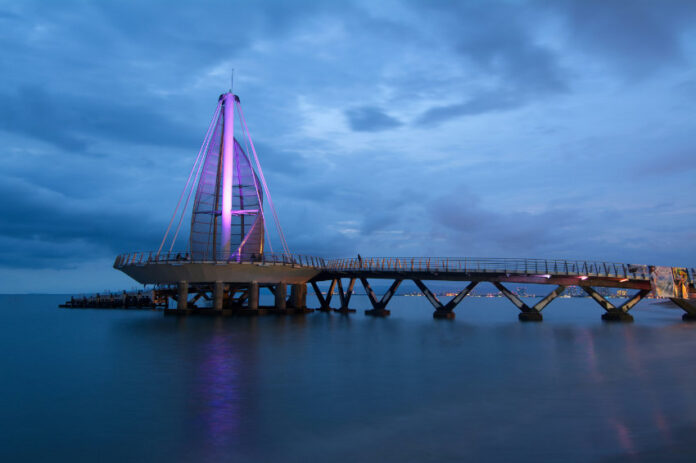Puerto Vallarta is smack dab in the middle of a major transition. Across the city, construction crews are breaking ground, council members are debating new fees and residents are weighing in on mobility and development plans.
From the airport to the Malecón, and from mountain roads to neighborhood streets, infrastructure is changing. The question now is how these changes, some ambitious, others controversial, will reshape daily life and the visitor experience in the years ahead.
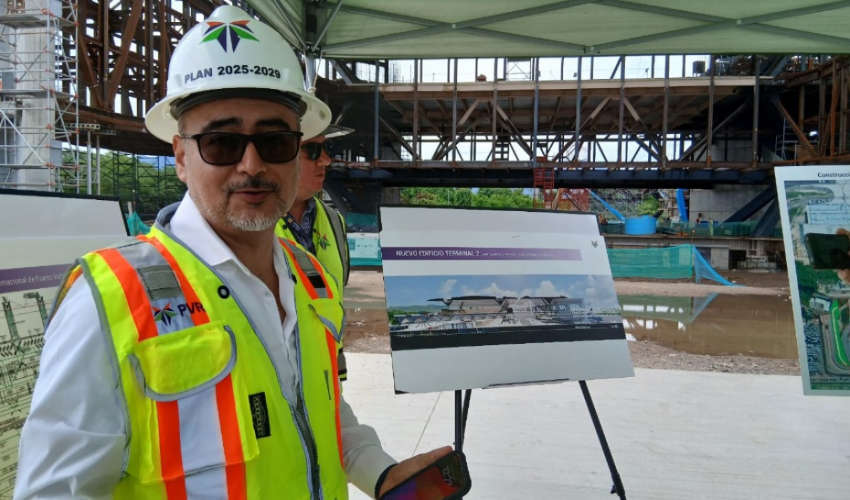
A bigger, greener gateway
The most visible project is the long-awaited expansion of the Puerto Vallarta International Airport. Grupo Aeroportuario del Pacifico (GAP) reports that the new terminal has reached 54% completion, with phased operations expected in 2026 and full capacity by 2027.
The 9.2 billion peso investment will add 74,000 square meters of space, doubling the airport’s passenger capacity and allowing 6 million more travelers per year. Once complete, the facility will include eight new jet-bridge gates and seven remote positions, increasing the total gate capacity to 32.
Sustainability is a centerpiece of the design. The terminal is targeting LEED Gold certification with solar panels, rainwater harvesting and solar-control glass facades. That eco-minded touch is a response to the growing demand for responsible travel, and comes at a time when Vallarta is receiving more international flights than ever, including new services from Porter Airlines and Southwest.
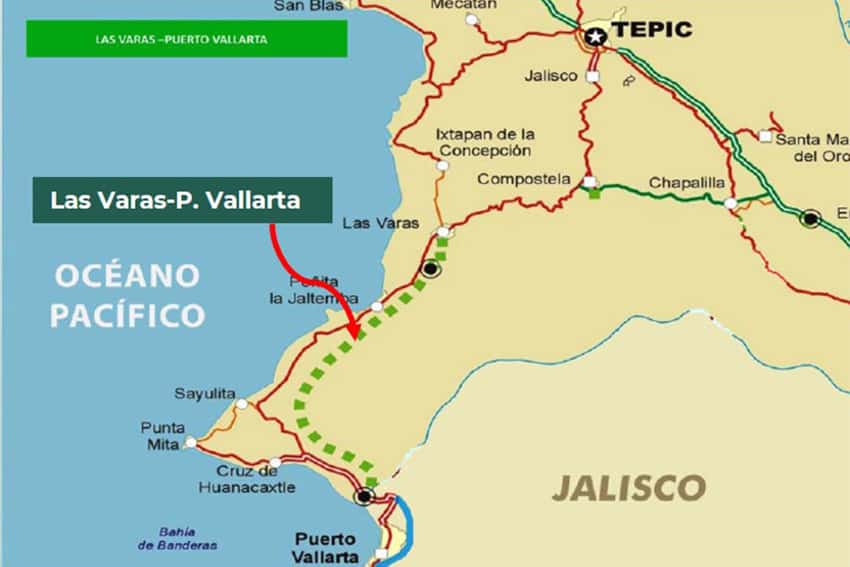
Highways that shorten distances
Air connectivity is only part of the equation. On the ground, a network of new roads is set to cut travel times dramatically. The most anticipated is the Tepic-Compostela highway, scheduled to open on November 1. Spanning 26 kilometers with 10 bridges, two railroad crossings, and a branch to Tepic Airport, the project will reduce the Tepic-Vallarta drive from three and a half hours to 75 minutes.
In parallel, construction has begun on the Amado Nervo Bridge, linking Puerto Vallarta with Bahia de Banderas by late 2026. Beyond easing vehicular congestion, the bridge will feature pedestrian and bike lanes, aligning with the city’s larger mobility push. Officials estimate the bridge will benefit nearly half a million people across the metropolitan area.
Meanwhile, smaller projects like the new four-kilometer El Jorullo access road are giving long-isolated mountain communities safe year-round connectivity. For travelers, this means easier access to Vallarta’s natural hinterlands for additional canyons, waterfalls, and adventure tourism.
A malecón for the future
Originally built in 1936 and last renovated in 2011, the oceanfront malecón boardwalk is once again set for expansion. The city has approved a northern extension stretching from 31 de Octubre to Argentia, with new lighting, planters, and automated irrigation.
The addition will create a northern gateway to the waterfront, connecting the Malecón to Parque Hidalgo.
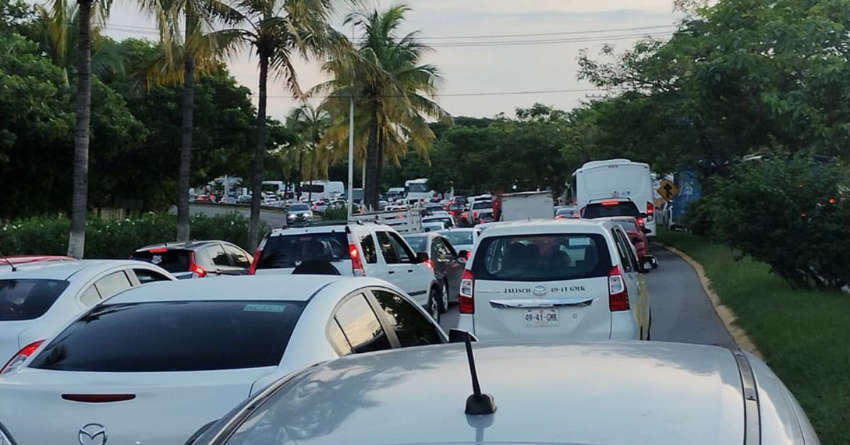
Tackling mobility: Bikes, buses, and parking
Mobility within the city is a pressing issue, and several projects aim to ease congestion while nudging residents and visitors toward more sustainable options. Puerto Vallarta is preparing to launch a free public bicycle system financed through the city’s lodging tax. The first step will be to rehabilitate the bike lane network; afterward, racks and fleets of bicycles will be introduced across hubs like Plaza Caracol, Plaza Lázaro Cárdenas, and the southern Malecón.
In Marina Vallarta, a free shuttle bus service has returned, offering residents, workers, and tourists no-cost transport through the neighborhood. The loop runs every 18 minutes from early morning until night.
Still, car use remains central, and parking is a flashpoint. City leaders are weighing a digital meter system using QR codes, with proposed rates of 18 pesos per hour across Centro, Zona Romantica, Versalles, and Marina Vallarta.
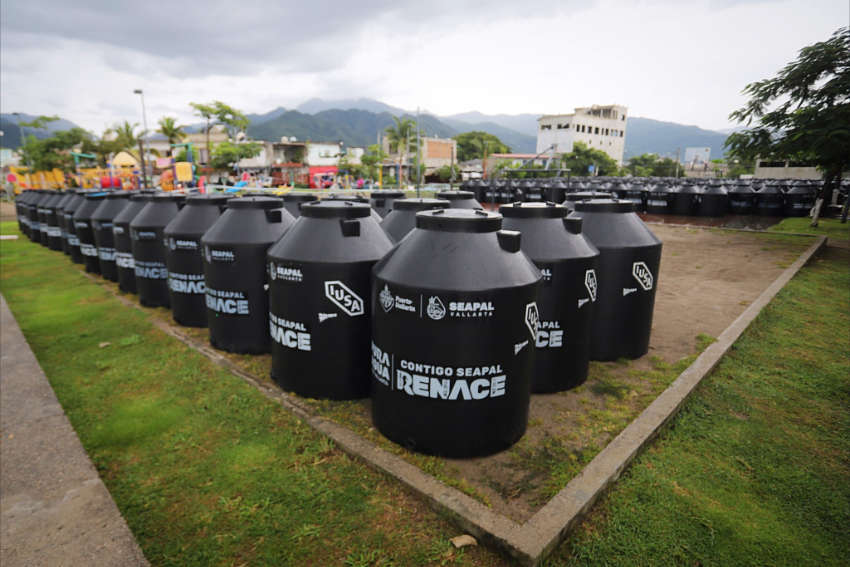
Investing in water and the environment
Behind the visible projects, Puerto Vallarta is also confronting a less glamorous but essential challenge: water. SEAPAL Vallarta, the city’s water utility, has struggled with financial shortfalls and service disruptions.
At the same time, environmental initiatives are being tied directly to tourism. A proposed municipal tax on short-term rental platforms like Airbnb would funnel 1-3% of booking fees into clean-water infrastructure, wastewater management, and the preservation of green zones. This would supplement Jalisco’s existing 4% lodging tax.
Puerto Vallarta going forward
Business chambers and civic leaders are urging coordination between all these projects —airport, port, bus station and urban upgrades — so that Puerto Vallarta presents a unified vision for handling tourism growth. Their proposals also emphasize culinary tourism, sustainability, training for restaurants and revitalization of landmarks like the Río Cuale and the Cerro neighborhood.
For now, the projects paint an ambitious picture of what Puerto Vallarta could become: better connected, easier to navigate and more sustainable. But many of these initiatives are still under construction or awaiting approval, and not all will unfold as envisioned. Budgets can tighten, community pushback can alter plans and maintenance often lags once ribbon-cuttings are over.
But what is clear is that Puerto Vallarta is at a crossroads, investing heavily in infrastructure at a moment when tourism demand is rising and resident needs are pressing. Whether the city can strike a balance between growth, livability, and long-term sustainability remains to be seen.
Meagan Drillinger is a New York native who has spent the past 15 years traveling around and writing about Mexico. While she’s on the road for assignments most of the time, Puerto Vallarta is her home base. Follow her travels on Instagram at @drillinjourneys or through her blog at drillinjourneys.com.
